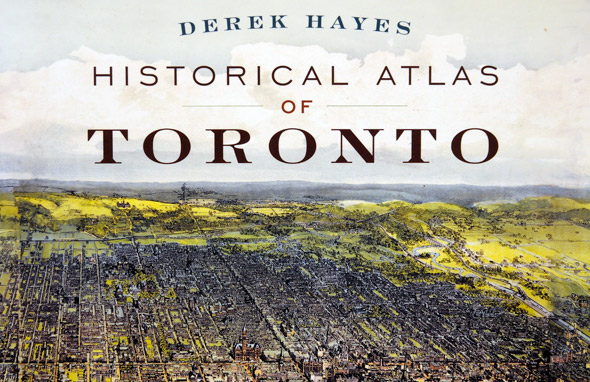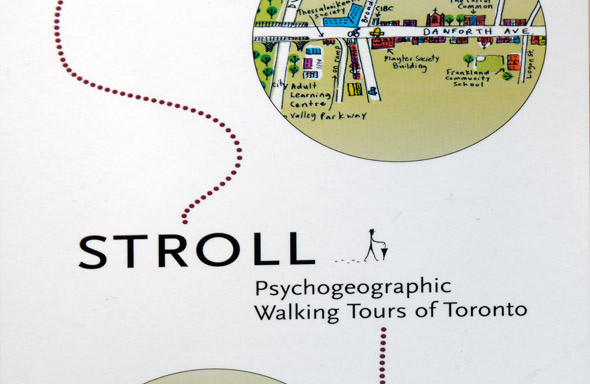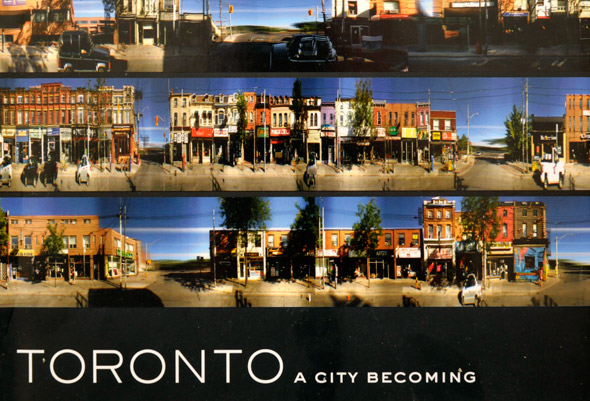
The top 10 books on Toronto
The top ten books on Toronto that make up this list shoudn't be confused with some of the excellent fictional narratives that are set in this city. In other words, what you won't find included here are the now-famous portrayals of Toronto in Michael Ondaatje's In the Skin of a Lion, Margaret Atwood's Cat's Eye or The Robber Bride (to mention only two of her novels set here), or the more recent Consolation by Michael Redhill. Worthy of their own list to be sure, with this collection I'll confine myself to non-fiction offerings.
Perhaps surprisingly, a number of the entries here have been published in the last five years or so. That's not to deride books published in the past, so much as to underscore the mini-boom of Toronto-based books that have come out of presses like Coach House and DM Publishers. And, for pragmatic reasons, it doesn't make much sense to recommend books that have become somewhat difficult to find or that focus on subject matter that's no longer as relevant to current readers.

Historical Atlas of Toronto - Derek Hayes
Published in 2008, the Historical Atlas of Toronto is an endlessly fascinating survey of Toronto's development -- from the standpoint of geography, transportation, population and economics -- via the many maps that have captured the city over the years. A decidedly visual book, the analysis is kept in check so as to let the maps "do the talking." And that they do, given the many full page spreads and high reproduction quality of the historical documents.
Unbuilt Toronto: A History of the City that Might Have Been - Mark Osbaldeston
Toronto has a long history of urban plans that never came to fruition, some for the better and some for the worse. Osbaldeston sheds light on numerous projects that would have profoundly changed the city, from the Queen Street subway line to the better-known Spadina Expressway to alternative designs for City Hall. Insightful analysis is paired with images and mock-ups of the many projects that give the reader a sense of what it all might have looked like.
A Guidebook to Contemporary Architecture in Toronto - Margaret and Phil Goodfellow
A handy pocketbook-sized text, this is a perfect companion for the Torontonian who likes to explore the city on foot. Short entries -- usually two to three paragraphs -- on the most significant architecture built in the last 10 to 15 years (with an emphasis on newer projects) provide readers with just enough information to satisfy mild curiosity and with a starting point for those compelled to find out more. While the write-ups could be a bit more engaging on their own, the lovely images more than make up for this minor deficiency.

Stroll: Psychogeographic Walking Tours of Toronto - Shawn Micallef
The most recently published entry on this list, Stroll makes the cut because Shawn Micallef's insightful and sometimes quirky observations are the perfect antidote to the attitude that Toronto is an uninteresting or dry city. The pace of the book matches the walking tours he describes, and the book reads like an invitation to the reader to pay more attention to his surroundings without the didactic tone that one might expect. It's impossible to read Stroll without getting at least a little excited at the wealth of interest that our built environment reveals when its really looked at.
Concrete Toronto: A Guidebook to Concrete Architecture from the Fifties to the Seventies - Michael McClelland and Graeme Stewart (editors)
Published prior to the Contemporary Guidebook, the two can be used as companion texts that cover architectural development in Toronto from the 1950s to today. More than that, however, the book takes to the task of proving just how beautiful, innovative and challenging our concrete heritage really is. It's astonishing how popular the building material was during the period covered, and the book does a good job of explaining how and why this was the case. It'll also make many readers reconsider their negative view of structures like Robarts Library, the Gardiner Expressway and the Manulife Centre.
The Shape of the City - John Sewell
I first read this book when I was in a third year Urban Studies course that focused on Toronto. It left an impact because to that point, I had yet to think much about urban planning and the profound degree to which it shaped my experience of Toronto. From the forward by Jane Jacobs to Sewell's examination of the problems associated with sprawling development and the planning of insular neighbourhoods like Regent Park, the book remains relevant as the city continues to struggle with many of the same issues he outlined more than 15 years ago.
HTO: Toronto's Water from Lake Iroquois to Lost Rivers to Low-flow Toilets - Christina Palassio and Wayne Reeves (editors)
Water is something that I, like most Torontonians, often take for granted. That's not so easy to do after a read through this collection of essays on the myriad roles water plays in our city's natural and built environment. If it sounds potentially boring, it's not. At all. The greatest strength is the diversity of the essays and their focus, be this on Toronto's geological past or how our water is treated, there's loads of interesting facts and observations about, well, HTO.

Toronto: A City Becoming - David McFarlane (editor)
If I had written this list last year, I wouldn't have included this title. On my first read I was disappointed with what I thought was the conservatism of the essays and the sparse visuals (it is after all a nice big edition, perfect for more photographs). But over the last little while I've found myself picking up again, and after a more thorough read of the essays on offer, I can say that it's grown on me. A collection that grapples with the Toronto of the 21st century, there's ample insight within these pages to make up for the old, white guy factor that originally turned me off.
Toronto's Visual Legacy: Official City Photography from 1856 to the Present
As much as I'm converting my library into a digital collection, I still find space for photography books. There's something about being able to flip through the pages of a set of archival images that I find deeply satisfying. If I have a complaint about this text, it's that I wish it had even more images. A must-read for those interested in local history.
Toronto: No Mean City - Eric Arthur
Originally published in 1964, this is the oldest book on the list. But, it really completes the trio of books on Toronto architecture along with Concrete Toronto and the Contemporary Guidebook. Arthur was a tireless activist for the preservation of Toronto's architectural legacy at a time when not many seemed to share his views. But he was also a proponent of the contemporary architecture of his time as well. This book, then, is something of a love story and a lament, which I suspect, is why it so easily strikes a chord with its Toronto-based readers.
Latest Videos
Latest Videos
Join the conversation Load comments







